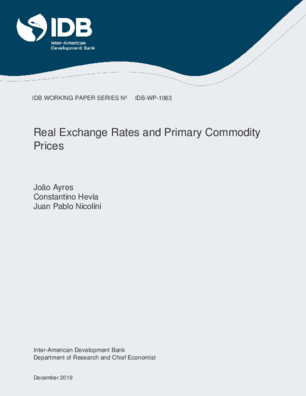Real Exchange Rates and Primary Commodity Prices
Date
Dec 2019
Summary
This paper shows that there is substantial comovement between prices of primary commodities such as oil, aluminum, maize, or copper and real exchange rates between developed economies such as Germany, Japan, and the United Kingdom against the US dollar. The production of commodities is then explicitly considered in a two-country model of trade with productivity shocks and shocks to the supply of commodities. The model is calibrated so as to reproduce, among other things, the volatility and persistence of primary commodity prices, and the model is shown to deliver equilibrium real exchange rates that are as volatile and persistent as they are in the data. The model rationalizes an empirical strategy to identify the share of the variance in real exchange rates that can be accounted for by the underlying shocks, even if those shocks are not observable. This strategy is used to argue that shocks that move primary commodity prices account for a large share of the volatility of real exchange rates in the data. The analysis implies that existing models used to analyze real exchange rates between large economies that mostly focus on trade between differentiated final goods could benefit, in terms of matching the behavior of real exchange rates, by also considering trade in primary commodities.




